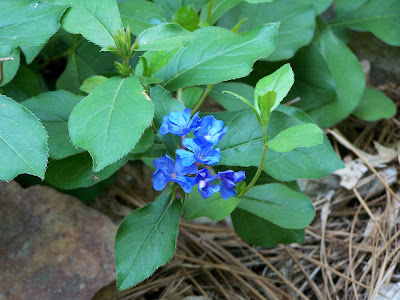“People need insects to survive, but insects do not need us.” ~ E.O. Wilson
After many hours spent on a computer this week, it was a relief to have an assignment to watch bees. I learned about the
Great Sunflower Project from Donna at
Gardens Eye View and immediately decided to participate. As a gardener, you probably already know about Colony Collapse Disorder, the devastating syndrome in which large numbers of bees
disappear from their hives and never return.
Many beekeepers believe bees are being poisoned by neonicatinoids, widely used insecticides broadcast over crops. Government scientists see the culprit as varroa mites. Others have proposed that electromagnetic radiation from cell phones could be the cause, or that honeybees have been weakened by being pressed into commercial service and trucked around the country to pollinate crops. But no one disagrees that bees are dying in large numbers.
Even before I learned of the dying bees, I worked to make my garden attractive to pollinators, with native plants in bloom from spring to fall. To fulfill my assignment as Citizen Scientist, all I had to do was choose a flower, watch it for 15 minutes, count the number of bees, and submit the data online. I chose monarda because a large patch is peaking now in a dazzling display of raspberry red flowers.
The project's leaders are hoping to learn more about urban populations of bees. I expected to see swarms of bees - monarda is knows as bee balm for a reason. But for 10 minutes, all I saw was one bumblebee, singlemindedly working the patch. The bee clambered in, on and under each of the many tubular flowers that make a flower head.
Below, you can see the bee pulling down the lips of one of the tubular flowers to get to the nectar.
I enjoyed my observations of the bee, but I began to worry - why had only one bumblebee appeared? I'm an organic gardener, but many of my neighbors are not. Were bees being poisoned in my neighborhood, too?
I looked around and spotted a second bumblebee on the flat pink blooms of a nearby Japanese spirea. I made an executive decision to count it, though I'm pretty sure a real scientist would have considered it outside the scope of the study. But it was a bee and it was there, so it counts. At the 14-minute mark, two honeybees appeared, one on the adjacent purple coneflower and one on the beebalm. Just under the wire, the honeybees catapulted my garden into the "great" category for bee visitations.
One day later, I took the photograph below. The flower has been well loved. The tubular flowers that once stood erect have been pulled down, exposing the center of the flower head.
Even if my garden is great for bees, the problem of the vanishing bees is a problem of the commons. No matter how many swathes of native plants we organic gardeners plant, bees won't survive if our neighbors have sterile yards drenched in insecticides. The biologist E.O. Wilson in "The Creation: An Appeal to Save Life on Earth" imagines the "cataclysm" of a world without insects.
-"A majority of the flowering plants, upon being deprived of their pollinators, cease to reproduce.
-"Most herbaceous plant species among them spiral down to extinction. Insect-pollinated shrubs and tress hang on for a few more years, in rare cases up to centuries.
-"The great majority of birds and other land vertebrates, now denied the specialized foliage, fruits, and insect prey on which they feed, follow the plants into oblivion.
-"The soil remains largely unturned, accelerating plant decline, because insects, not earthworms as generally supposed, are the principal turners and renewers of the soil.
-"Populations of fungi and bacteria explode and remain at a peak over a few years while metabolizing the dead plant and animal material that piles up.
-"Wind-pollinated grasses and a handful of fern and conifer species spread over much of the deforested terrain, then decline to some extent as the soil deteriorates.
-"The human species survives, able to fall back on wind-pollinated grains and marine fishing. But amid widespread starvation during the first several decades, human populations plunge to a small fraction of their former level. The wars for control of the dwindling resources, the suffering, and the tumultuous decline to dark-age barbarism would be unprecedented in human history.
-"Clinging to survival in a devastated world, and trapped in an ecological dark age, the survivors would offer prayers for the return of weeds and bugs."
Wilson concludes, "The bottom line of my scenario is this: be careful with pesticides. Do not give thought to diminishing the insect world.”






















































